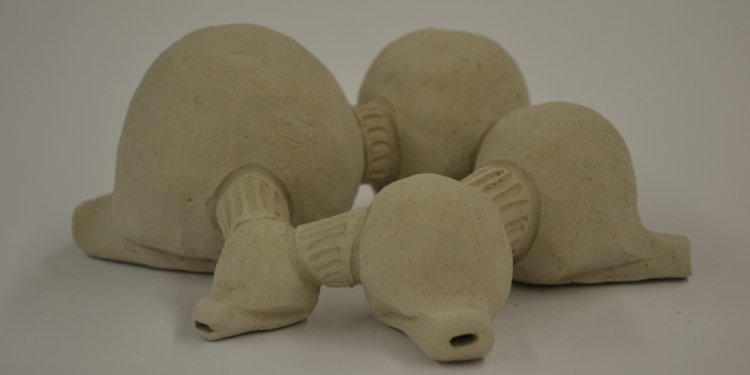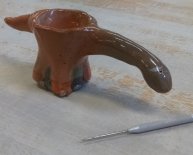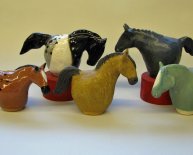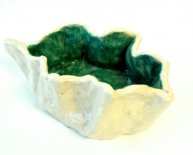
Pinch pot Sculpture
Level: ECE, Primary, Junior, Middle School, High School
Grades: PreK and up | Age: 2yrs and up | : Andrea Mulder-Slater
What is Clay?
Clay is a special kind of earth which is made by the decomposition of rocks through the action of weathering.
What does that mean?
Well basically, over time, bits of earth are carried from one place to another by water and deposited in areas where the water slows down to a trickle. (Have you ever gone digging by the water's edge only to grab a handful of muck? Well that muck is clay.) As the bits of earth travel with the water, they pick up all sorts of stuff and by the time we pick up a box of clay from the pottery store, the muck has been collected and prepared for us to use. All of the tiny rocks and lumps have been removed and some additional materials, like sand are sometimes added to create the perfect workable clay.
What Else?
Clay can be found anywhere but it is only useful for pottery if it has good "plasticity." You can test this by seeing how stretchy a piece of clay is. If you can take a piece of clay, roll it into a coil and bend it into a ring without cracking and falling apart, chances are it will make good pots and sculptures.
Natural clay that we find outside usually needs to be cleaned and refined before it can be used. Any tiny rocks and lumps are removed and some additional materials, like sand are sometimes added to create the perfect workable clay that we buy from the pottery supply house.
Working With Clay:
Clay artists throughout the ages have invented many ways to shape things out of clay.
PINCH - Use your fingers to pinch and poke a single lump of clay into any shape.
SLAB - Roll the clay into flat sheets (like a pie crust) to cut apart and assemble.
COIL - Roll out long snakes of clay and twist them into coils and shapes.
WHEEL - Spin clay on a potter's wheel to form pots and vases.
Some Tools to Use When Working with Clay:
- Your fingers
- Rolling pins and canvas
- Popsicle sticks and toothpicks
- Cookie cutters
- Plastic bags
- A clay cutter (wire)
- Sponges
- Various carving tools, nuts and bolts, old toothbrushes and anything else you can get your hands on that will create texture in the clay
Clay Definitions:
Wedging: This is what you do to get all of the air bubbles out of your clay. Basically you roll the clay around on a flat surface "pushing" and "pulling" the clay so all of the air comes out. Clay right out of the box is already wedged ... you don't have to worry about air bubbles with new clay.
Kiln: This is a large, hot oven that is used to fire the clay. You need to fire your clay in a kiln in order for it to be permanent. A kiln can reach temperatures of 2500 degrees F. and higher. Your oven at home maybe reaches 500 degrees F.
Earthenware: This is the type of clay often used in schools. It comes in white or red and it is fired to a temperature of approximately 1000 degrees C. or 1830 degrees F.
Slip: This is liquid clay ... clay with a lot of water added to it. It is used in ceramics (poured into molds). It is also sometimes used as a sort of glue to hold clay pieces together. You need to use slip to "fasten" pieces of clay together so that they don't fall apart in the kiln. You see, clay shrinks as it dries so if you haven't made sure that your clay pieces are firmly attached, they will separate in the kiln. It isn't enough to simply "pile" one piece of clay on the next. Use watered down clay as your glue.
Leather-Hard: This is what we call clay that has dried for a few hours. It should feel slightly cool to the touch. Leather-hard clay is not dry enough for firing in a kiln ... If a piece of clay is put into the kiln while it is still wet, it could explode. When water gets hot ... it boils right? Well, your pottery piece will literally "blow up" if it contains water or moisture that boils when it gets hot in the kiln.
Greenware: When clay has dried and is ready to be fired in a kiln, it is referred to as greenware. Usually clay should air dry for about a week depending on the thickness of the piece.

















